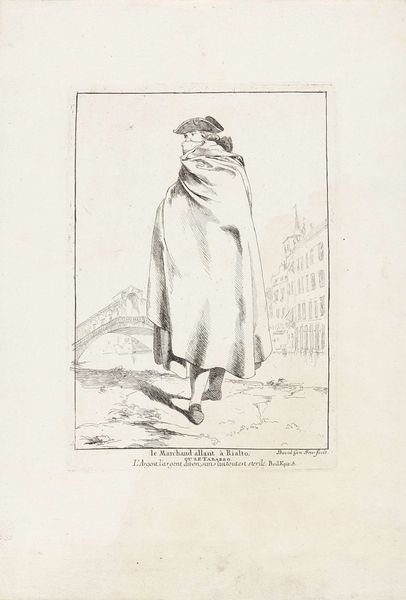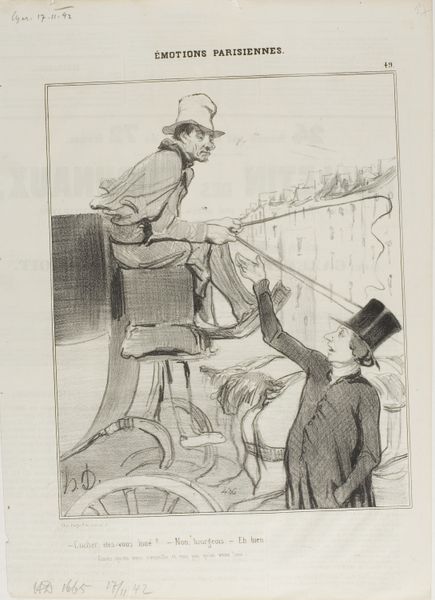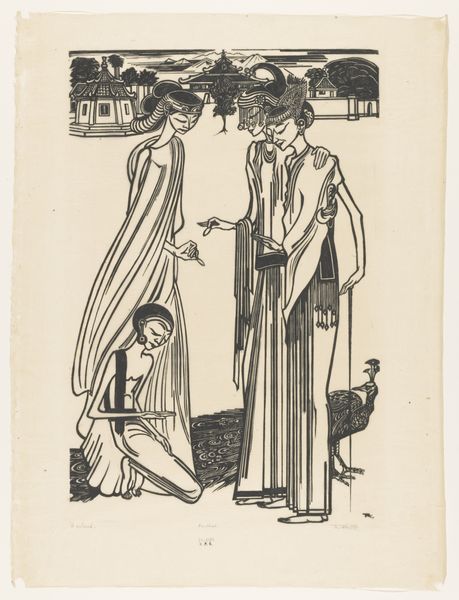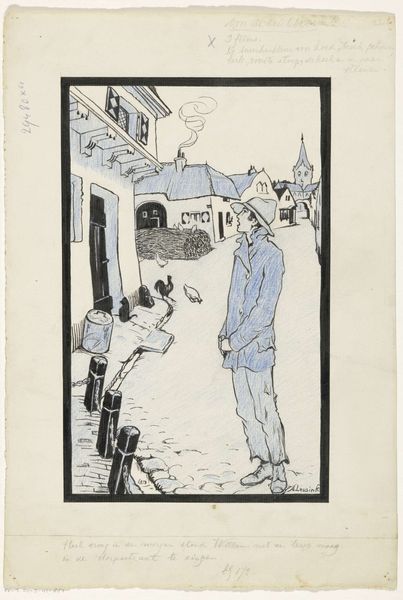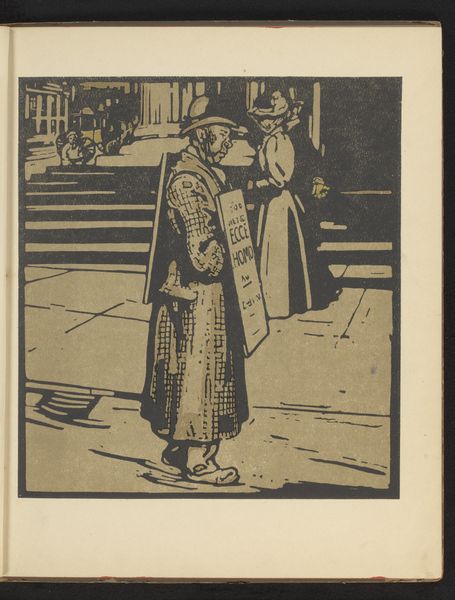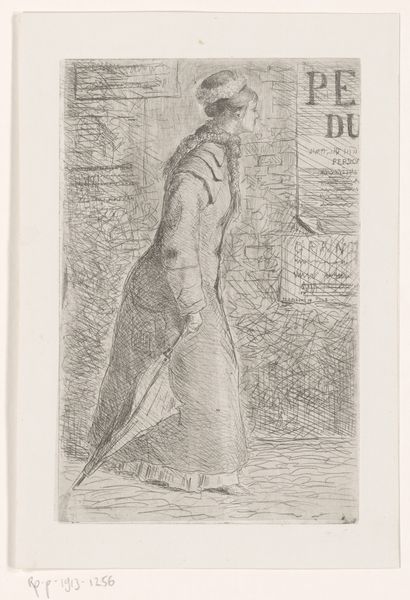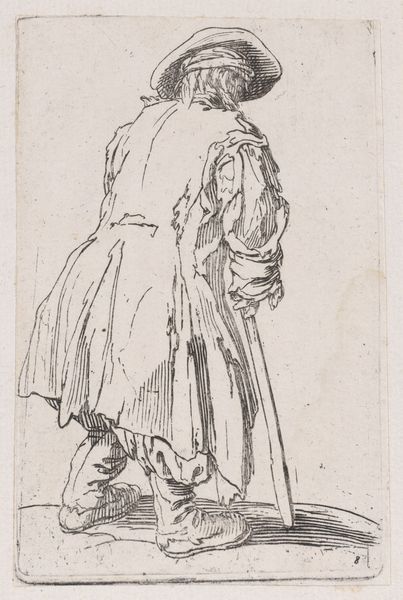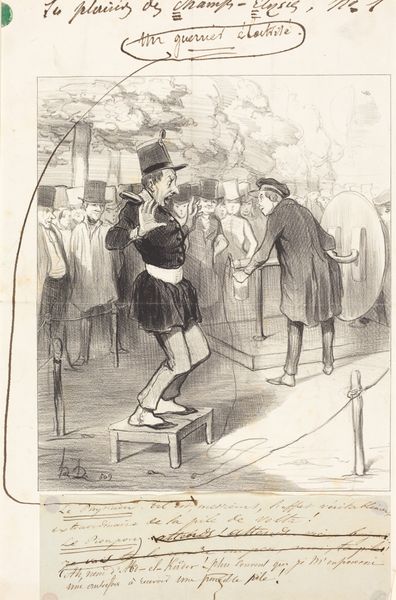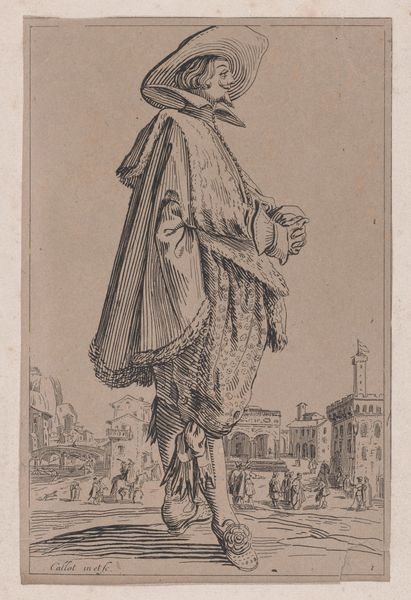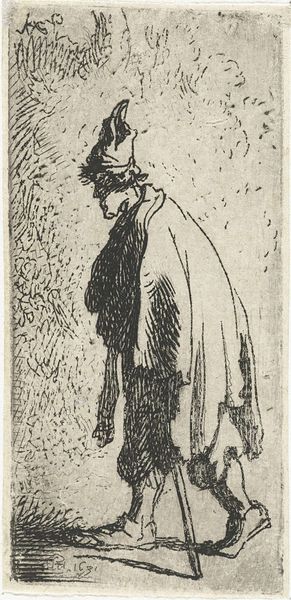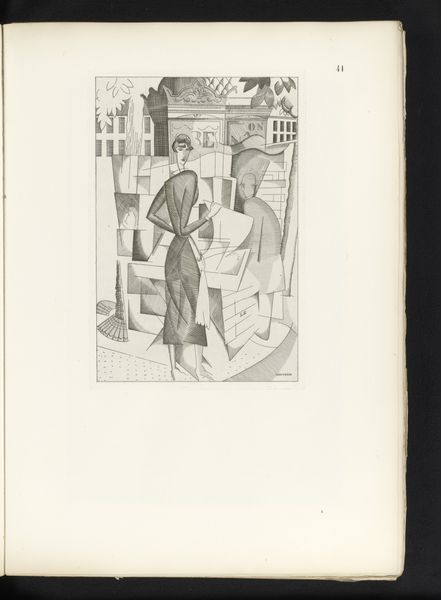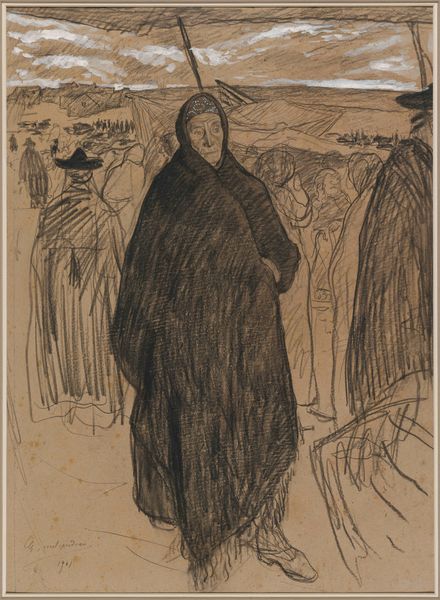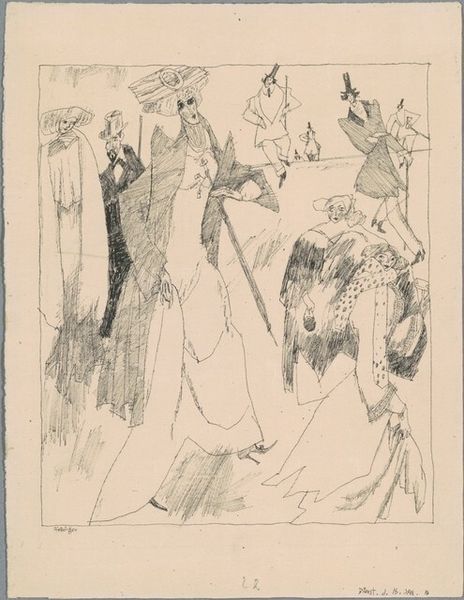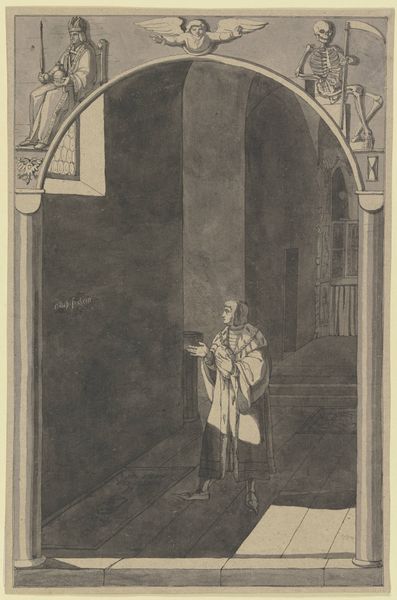
drawing, paper, watercolor, ink
#
portrait
#
drawing
#
figuration
#
paper
#
watercolor
#
ink
#
intimism
#
cityscape
#
watercolour illustration
#
genre-painting
Dimensions: height 336 mm, width 201 mm
Copyright: Rijks Museum: Open Domain
Curator: Let’s turn our attention to "Moeder, Rinus en Jan op het terras van een villa," which roughly translates to "Mother, Rinus and Jan on the Terrace of a Villa." It’s a work on paper combining ink and watercolor by Anny Leusink, created before 1926. Editor: The mood is quite peculiar. There’s something distinctly unsettling about this seemingly pleasant scene. The limited palette, the flatness of the forms. The drawing style feels intentionally awkward. Curator: I think that awkwardness serves the artwork well. Considering Leusink was a woman artist in the early 20th century, such choices could reflect the era’s constraints and societal expectations. There’s almost a sense of confinement, wouldn’t you say? Trapped by gender and class roles. Editor: I concede it conveys unease, yet I hesitate to ascribe intentionality without firmer biographical context. Look closer—note the strong verticals versus the gentle curves, which certainly adds to the tension. Is it a compositional study of line against shape, or is that reading too much into the illustration style? Curator: Consider that it's not just lines versus shapes; it’s who occupies those shapes and their placement within the scene. The man in blue seems trapped, quite alienated, in the villa, positioned as a kind of observer, seemingly stuck within those compositional lines you noted. And what does it mean that one figure has her back turned to the viewer and the others face elsewhere too? Editor: A fair point. Though consider this: The textures, built from precise strokes and controlled washes, contrast sharply with the freehand quality elsewhere, like a painting unfinished with different priorities on display across the frame. Perhaps she was merely working quickly. Curator: Or perhaps those quicker lines speak to the economic realities of the time? Women artists especially. I believe looking closely at this picture prompts important considerations, especially of genre, identity and gender. Editor: Interesting point! Ultimately, Leusink gives us something rich to reflect upon – that space between form and expression of lived experience.
Comments
No comments
Be the first to comment and join the conversation on the ultimate creative platform.
